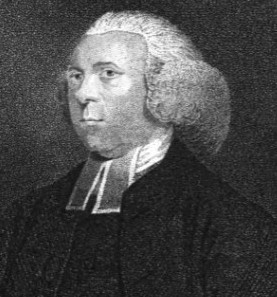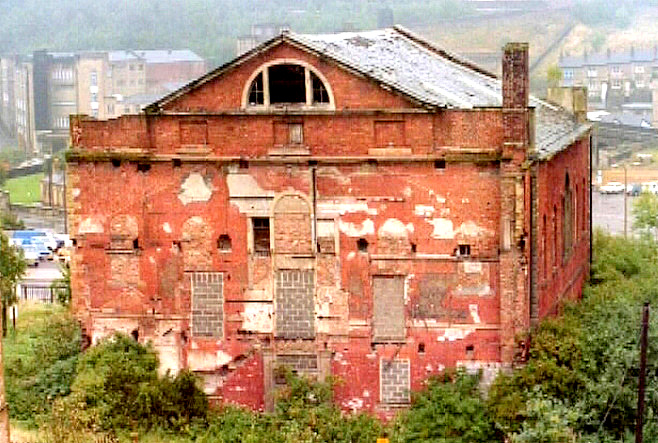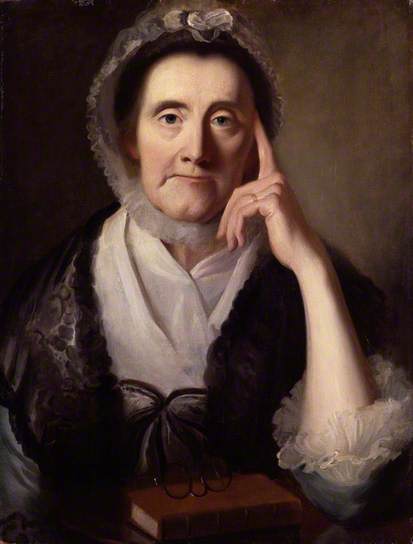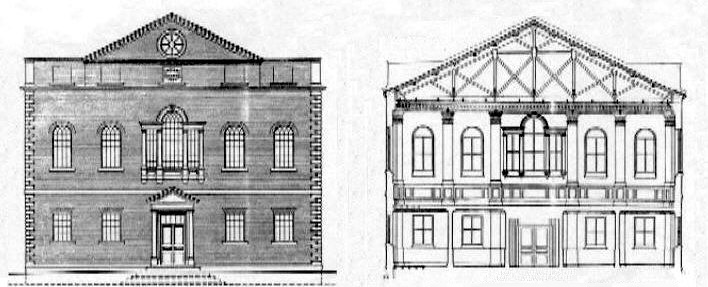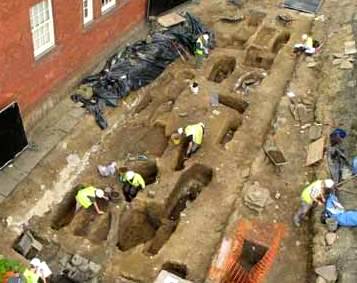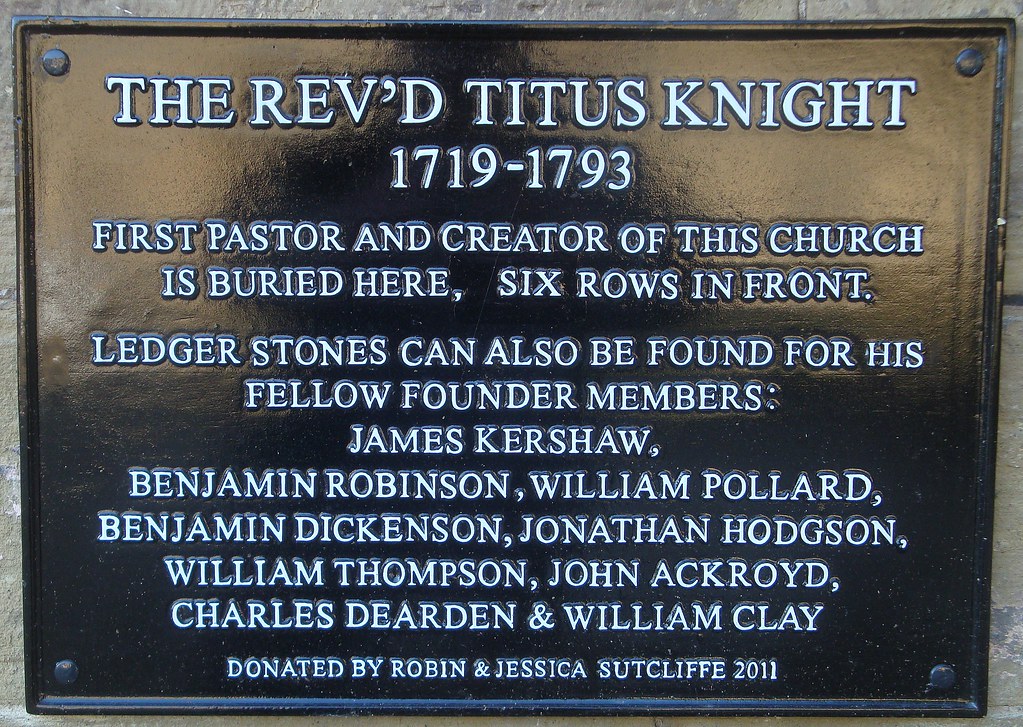
Square Independent Chapel
Square Independent Chapel is an old building in Halifax, West Yorkshire, England.
The original property dates from the 18th century, it was enlarged in the 19th century and renovated at the end of the 20th century.
The chapel was built in 1772, designed by architect Thomas Bradley (1753-1833) and James Kershaw (1737-1806) at the behest of the reverend Titus Knight (1719-1793), an independent minister from Halifax.
One of the ten founding members was Benjamin Dickenson (1719-1798), a Northowram merchant who contributed significantly to growth over many years.
Origins & History
Congregationalists had held regular meetings in Halifax since at least 1763, but construction on the building began later.
The red brick chapel was built in The Square, and the name comes from its location, not it's design.
Selina Hastings, Countess of Huntingdon (1707-1791) provided financial assistance for the construction and was the first independent congregation in Halifax, inaugurated on May 24, 1772.
Founding members included the reverend Titus Knight (1719-1793), John Akroyd, William Clay, Charles Dearden, Benjamin Dickenson (1719-1798), Jonathan Hodgson, James Kershaw (1725-1797), William Pollard (1726-1814), Benjamin Robinson and William Thompson (1729-1812). Some of whom contributed 100 to 250 guineas to the cost.
Square Independent Chapel was 60 square feet and was then the largest and most splendid place of nonconformist worship in England and is described as a modern pantheon. It had the longest unsupported ceiling light in the country and a Venetian window in the front.
When the renowned English clergyman, theologian, and evangelist John Wesley (1703-1791) visited the chapel in July 1772, he wrote:
'My old friend, Titus Knight, offered me the use of his new meeting, larger than Dr. Taylor's in Norwich, and ended with the greatest grace; but I judged that more people would attend outdoors, so I preached at the cow market to a large crowd.'
The congregational chapel was typical of the non-conformist design, offering an uninterrupted view of the preacher, without internal supporting structures and as the name suggests, with a square base. Unusual for the Calderdale region, it was built with red brick instead of local stone.
Square Independent Chapel, with its 235-foot spire and tower, was opened in 1857 and financed by Dean Clough's Crossley brothers, John and Sir Francis.
Traces of paint on the brick and stone were analyzed and found to contain a mixture of lime, linseed oil, and bull's blood. The blood would have emphasized the red of the brick. The construction cost of the chapel was said to be around £ 2,000 and the pulpit to cost £ 100.
There was much criticism about the cost, and the Reverend Titus Knight (1719-1793) addressed this in his 1772 poem Hhadash Hamishcan.
Square Sunday School opened in 1804 and the last service to be held at the Independent Chapel in Halifax was on June 12, 1857.
Later the building was converted into a Sunday School for Square Congregational Church and modifications were made to the interior: the pulpit and galleries were removed, a gallery-level floor was installed, and the ground level was divided with a central corridor and rooms on the sides.
For a time, the property was used as a function room for classes, school awards, exploration groups, and rehearsals for the Square Orchestra.
In 1939, it was requisitioned by the army and later acquired by the Calderdale City Council in 1969. After the efforts of Victorian society, the building was listed for preservation in 1970, although the council voted to demolish it in 1985.
In 1989, the City Council sold the building to the Square Chapel Building Trust for £ 25. With the help of a £ 3.5 million restoration project fund, work to make the chapel structurally sound was completed in 1990.
It became the Square Chapel Arts Center in 1992 and it should be noted that from it's inception there was a small cemetery.
The base of the original fountain is outside the entrance to the Chapel but the original pulpit, without its steps, has been placed in the restaurant area of the building.
Square Independent Chapel
Among the converts from early Methodism was the Reverend Titus Knight (1719-1793), who worked for a time with John Wesley (1703-1791), but was ultimately dissatisfied with the doctrinal views he had hitherto preached.
Selina Hastings, Countess of Huntingdon (1707-1791) offered to seek his episcopal ordination, but as some friends were still attached to his ministry, it was decided to fit two cabins for a chapel and the exercise of their ministry among them.
Mr. Grimshaw, of Haworth, undertook to commission it and obtained the name of the Countess of Huntingdon as his first subscriber. This building was in the fold of the chapel, Gaol Lane, and the contract is dated 1763.
Among her listeners was Mrs. Kershaw, whose husband attended the then Unitarian Chapel at Northgate End, and frequently accompanied her to hear the Reverend Titus Knight (1719-1793), and her views underwent a complete change.
The little chapel was soon filled with people and Mr. Kershaw arranged for the construction of a more comfortable building. Consequently, the new chapel was designed.
By default, the reverend Henry Venn (1725-1797), then in Huddersfield, took great interest and collected a contribution on his behalf of £ 170. The style of the building, which far surpassed most chapels of it's time, elicited not a small comment, especially among some of the London dissidents, who were asked for help.
The Crossley family pledged to donate part of their profits to Square Independent Chapel and other church and social plans if their business prospered.
The respective ministers of the chapel were the reverend Titus Knight (1719-1793), as a founding member, a soulful, energetic and helpful preacher who was closely associated with Whitefield, in whose chapels he preached regularly for two months out of the year. At the same time author of several publications, among which were two volumes of sermons, "Dialogues on important topics."
He resigned on September 13, 1791, and died in Halifax in 1793, at the age of 74. Mr. Kershaw was, during Knight's ministry, a deacon of the church. His curate in that office was Mr. Hodgson, whose father was a prominent member of the Heckmondwike congregation.
The reverend Joseph Cockin (c. 1782-1861) of Thornton continued from 1791 to 1828, and was a courageous, zealous, capable, and devoted minister. He preached annually in some of the great chapels of London, where his ministry was very acceptable and helpful. He also preached before the London Missionary Society in 1798 and devoted himself primarily to public service in his own county. Besides, he was a most jealous itinerant. Before his death there was a separation on the part of his congregation and the Chapel of Zion was built for his accommodation.
The reverend John Barling (1804-1883) followed from 1829 to 1833, who had been Mr. Cockin's assistant since 1827, and became his successor. He was a man of great talent and virtue, but, having finally embraced Unitary sentiments, he resigned from office in 1833.
Then came the reverend Alexander Ewing (1814-1873) from 1834 to 1846, and upon his accession, several of the members withdrew and formed a new congregation on Harrison Road. In 1839 Ewing published a volume of speeches and in 1846 he moved to Gosport.
In this period, the chapel was renovated and remodeled and day schools were established.
From 1846 to 1861 the reverend Enoch Mellor (1823-1881) held the position of minister, and during his ministry a new chapel was erected, of great dimensions and considerable elegance, fitting out the old chapel for school classrooms.
It was inaugurated on July 15, 1855, with the tower and the decorations being special gifts from some of the faithful. After a successful pastorate, Reverend Mellor moved to Great George Street, Liverpool in 1861.
The reverend William Roberts (c.1820-c.1890) of Southampton arrived in 1862 but resigned in 1866 to become pastor of a church in Upper Holloway, London.
This same year the reverend John Fletcher (c. 1840-1925) remained for a time, but a year later, in 1867, the reverend Enoch Mellor (1823-1881) returned from Liverpool to his previous position, and was warmly received by his congregation.
Today
In 2013 Wessex Archaeology undertook a programme of historical building recording and evaluation work at the Square Chapel, as part of the Cornerstone Project which is adding an extension to the Arts Centre and alterations to Piece Hall.
The evaluation confirmed the existence of in situ burials on all sides of the chapel and identified a minimum of 41 graves, this includes four brick vaults and eight articulated burials. 19th-century structures associated with an extension to the chapel were also recorded.
The name plate of James Thompson (1769-1831) provided a burial date of 1831 for a grave on the eastern side of the chapel, extending the known period of burials in this area.
The main body of the church was demolished in December 1976, and since 1992 the chapel has been used as Halifax's arts center, both Grade II listed buildings.

Benjamin Dickenson / Founding Member of Square Independent Chapel
Benjamin Dickenson (Halifax, Yorkshire, England; March 18, 1719 - Halifax, Yorskhire, England; February 16, 1798) was an English merchant and a founding member of Square Independent Chapel in the late 18th century.
Family
Benjamin Dickenson was the son of Hannah Foster (1674-1763) of Ossett, and the reverend Thomas Dickenson (1669-1743), a nonconformist English minister, successor to Oliver Heywood (1629-1702) from 1702 to 1743.
His parents were married on October 24, 1705 in Ossett, Yorkshire, England and together they had 12 children: Thomas Dickenson (1706-1736), Joseph Dickenson (1707-1741), Elizabeth Dickenson (1709-?), Hannah Dickenson (1712-?), John Dickenson (1714-1764), Richard Dickenson (1715-1718), Mary Dickenson (1717-1804), Benjamin Dickenson (1719-?), Anne Dickenson (1721-1797), Nathanael Dickenson (1722-1741), Richard Dickenson (1724-1726) and Joshua Dickenson (1727-?).
Several of Benjamin Dickenson's siblings died in infancy, and according to one of his father's records, his brother Joseph Dickenson (1707-1741) was in two battles and was not injured, but in late May 1741, one A strong fever that was very fatal for many, seized him while passing through the Spanish city of Cartagena, and he died at sea, returning to England.
The same happened with another of them, Nathaniel Dickenson (1723-1741), who died in the port of Cartagena at the age of 18.
Another of his sisters, Mary Dickenson of London (1717-1804), married on September 29, 1717 in Northowram with James Harriot (1718-1783), professor of the Cordwainers Company and lieutenant colonel of the London Militia. It's precisely to her that a letter written by her father in 1731 is addressed, which also refers to Richard Foster (1648-1730), Benjamin's grandfather.
Benjamin Dickenson married Anne Pendlebury of Leeds (1719-1778) at age 24 on February 26, 1744, at St Peter's or Leeds Minster Parish Church in Leeds, West Yorkshire, England. However, years later after his wife's death in 1778, Benjamin married Hannah Howorth on August 6, 1792, at the age of 73.
It should be noted that Hannah Foster was the daughter of Hannah Jackson (1658-1727), a native of Bilston, and Richard Foster (1648-1730), an independent dissident from Ossett who died in 1730 after suffering severe strangulation pains for a considerable time.
Biography
Benjamin Dickenson was born at 4:30 a.m. of March 18, 1719 in Ellen Royd near Halifax, Yorkshire and was baptized on April 1 of that same year in Northowram, where he lived for many years.
Around this time, his father Thomas Dickenson (1669-1743) was preaching at Oliver Heywood's Chapel (1629-1702) and there he kept a record of the births, marriages, and deaths of his own family.
Death
Benjamin Dickenson died on February 16, 1798 in Halifax, Yorskhire, England at the age of 78. He was buried at the Square Independent Chapel in Halifax, and his remains rest there.
References
Malcolm Bull's Calderdale Companion.
- Northowram Historical Society.






